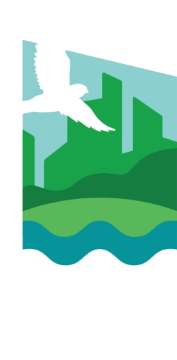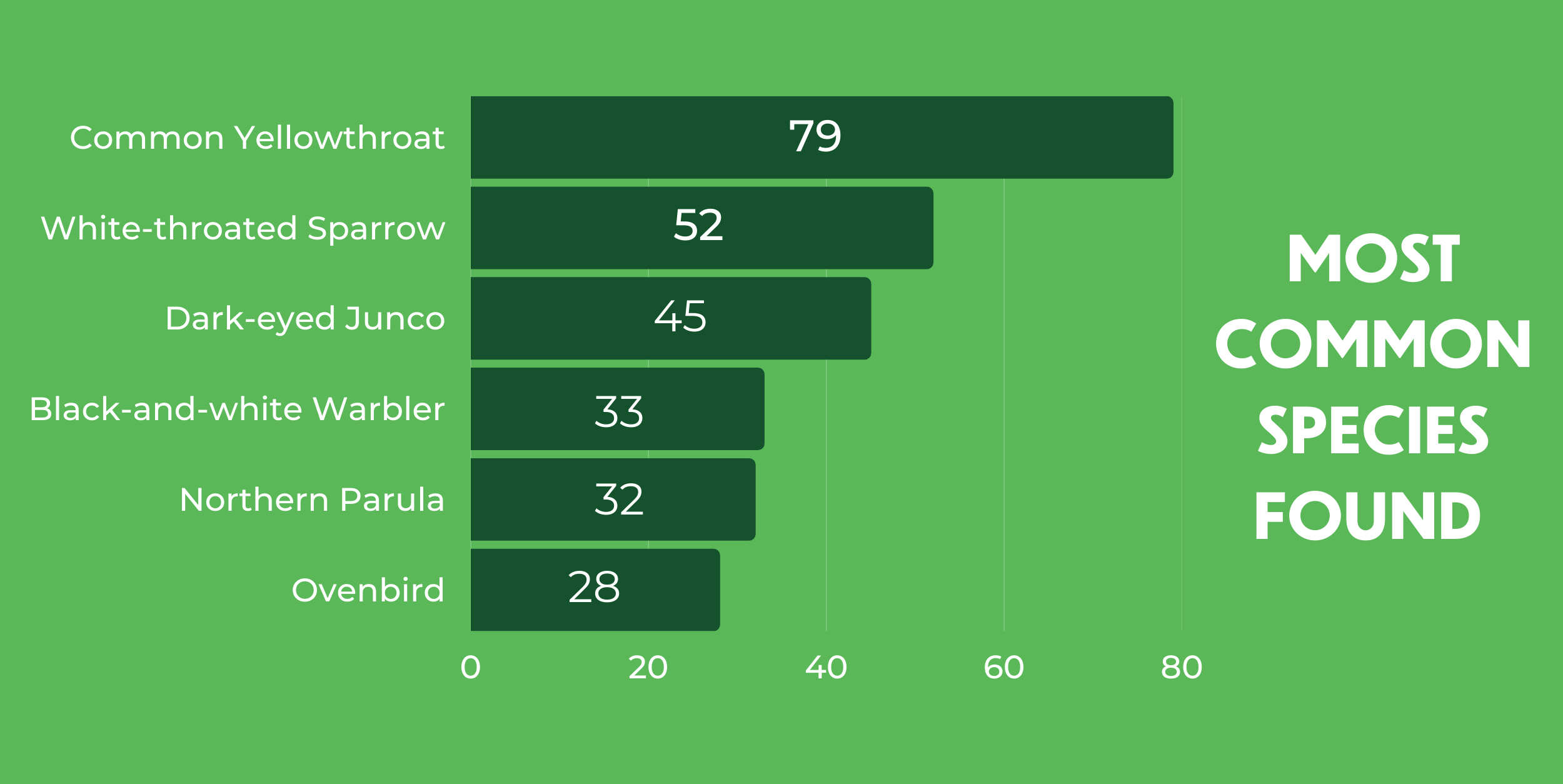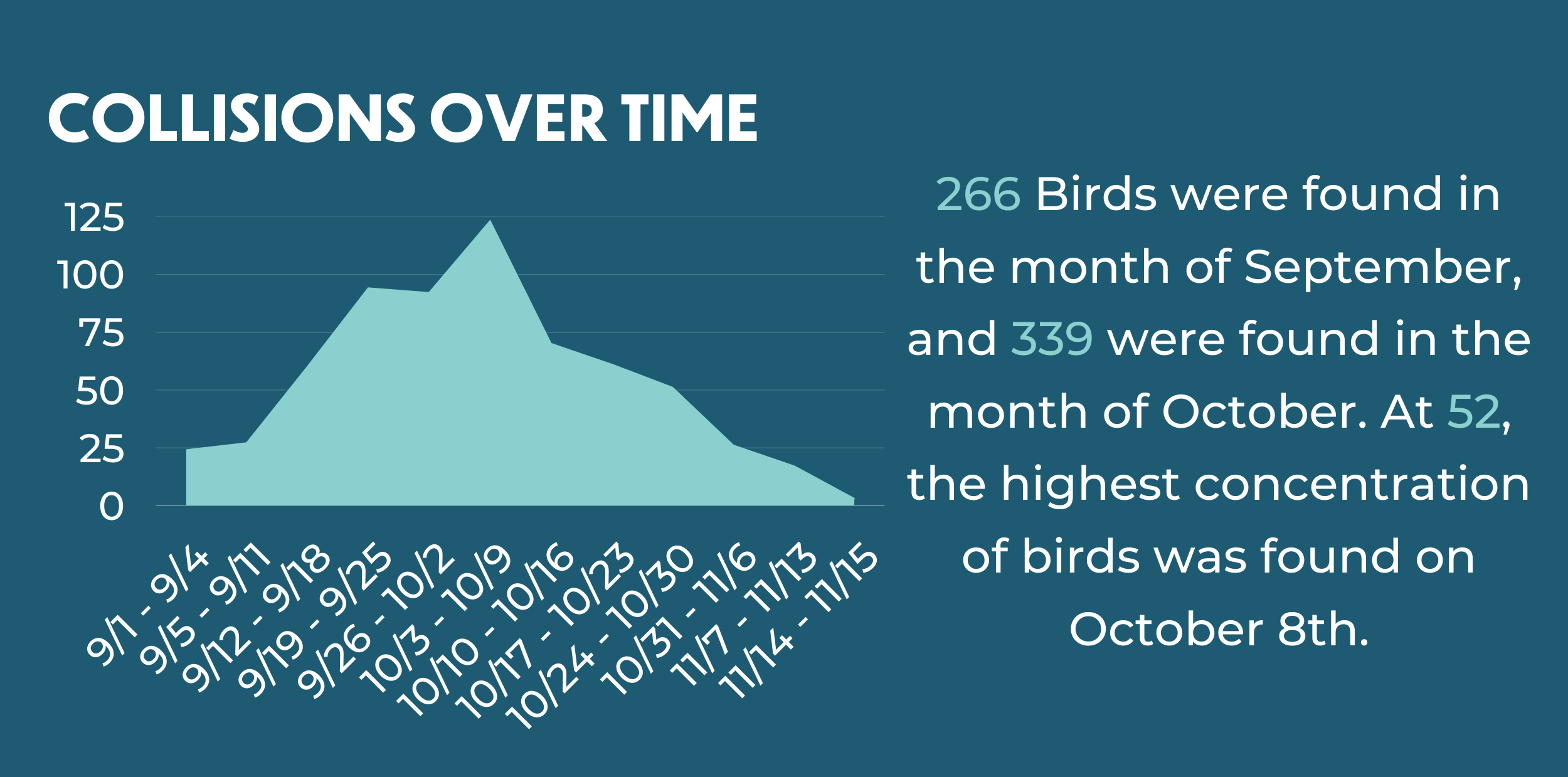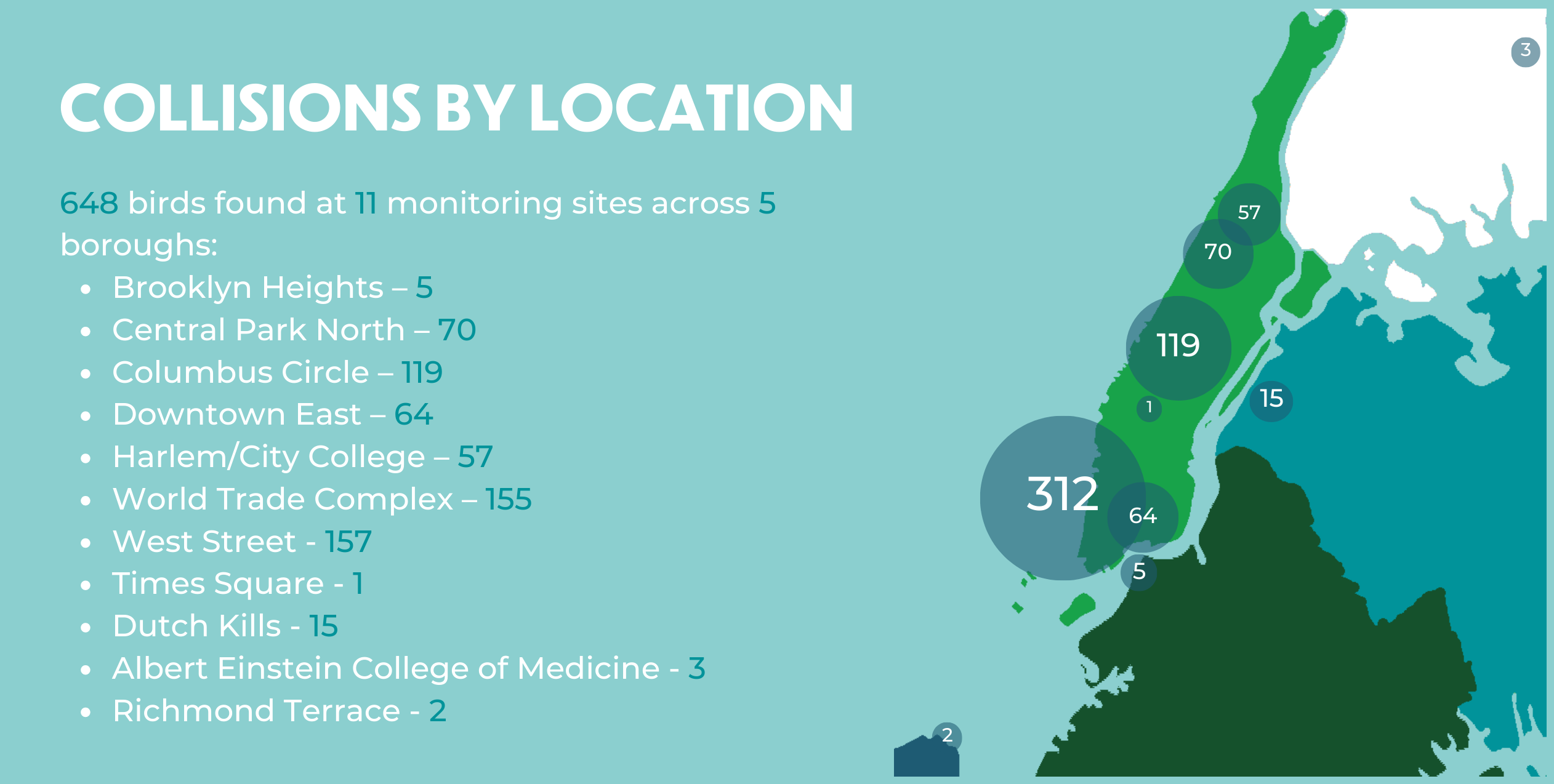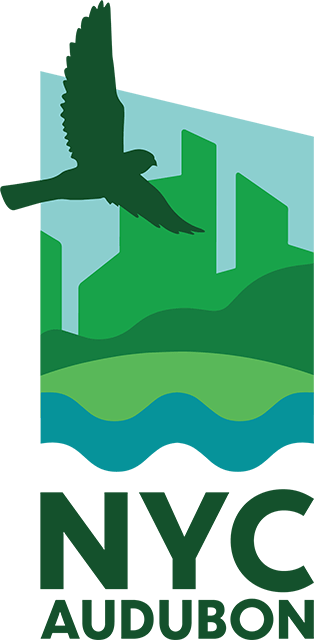PSF FALL 2022
category: VOLUNTEER!CONSERVATION
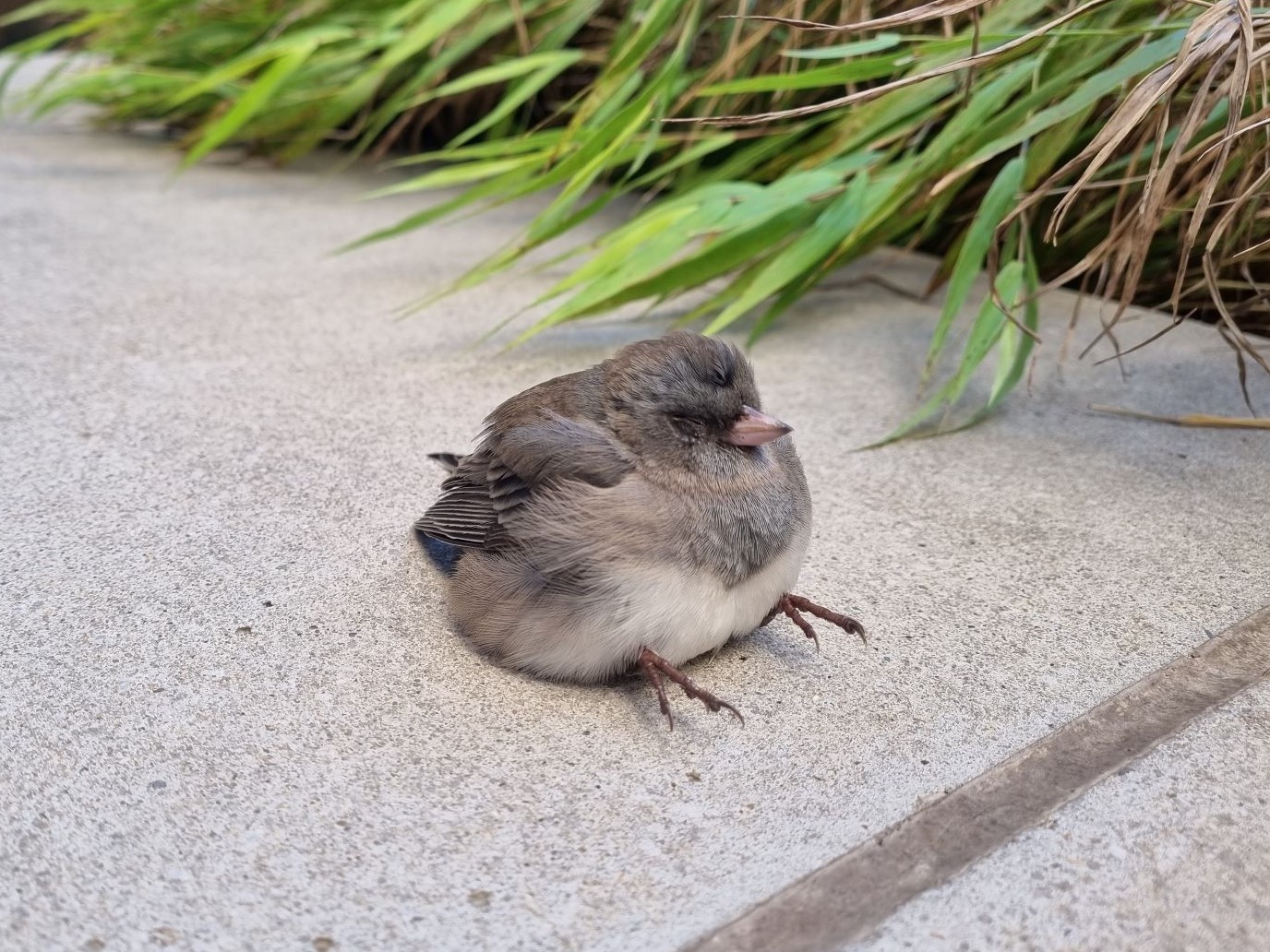
This injured Dark-eyed Junco was found by a Project Safe Flight collision monitor in November 2022. Photo: Sung-Joo Lee
Project Safe Flight Unwrapped: Fall 2022
Katherine Chen | February 27, 2023
In fall 2022, a record number of dedicated Project Safe Flight volunteers surveyed a record number of monitoring routes for window collision victims, expanding the footprint of Project Safe Flight to all five boroughs of New York City for the first time. This 26-year-old community science project is almost entirely driven by volunteers: collision monitors survey specific routes in the City from September through early November in the fall, and April through early June in the spring. Waking up at the crack of dawn (sometimes even earlier!), they meticulously collect data on the birds they find. In addition, our dedicated volunteers rescue injured victims that survive collisions, making sure they get to a licensed wildlife rehabilitation center for treatment and care.
Through the fall, a diverse team of 75 volunteers, 51 of whom were new, monitored 11 routes across the City. Over 11 weeks of monitoring, we found a total of 648 birds of 67 identified species; 471 were found dead and 177 alive, but injured.
See the totals of the most frequent collision victims found in fall 2022, below. Populations of the four most frequently found species—Common Yellowthroat, White-throated Sparrow, Dark-eyed Junco, and Black-and-white Warbler—declined in North America between 1966 and 2019, according to the Northern American Breeding Bird Survey. Northern Parula populations have increased and Ovenbird populations have been stable or slightly increased overall. A full list of species found by the Fall 2022 Project Safe Flight volunteers is available at the end of this post.
In fall 2022, a record number of dedicated Project Safe Flight volunteers surveyed a record number of monitoring routes for window collision victims, expanding the footprint of Project Safe Flight to all five boroughs of New York City for the first time. This 26-year-old community science project is almost entirely driven by volunteers: collision monitors survey specific routes in the City from September through early November in the fall, and April through early June in the spring. Waking up at the crack of dawn (sometimes even earlier!), they meticulously collect data on the birds they find. In addition, our dedicated volunteers rescue injured victims that survive collisions, making sure they get to a licensed wildlife rehabilitation center for treatment and care.
Through the fall, a diverse team of 75 volunteers, 51 of whom were new, monitored 11 routes across the City. Over 11 weeks of monitoring, we found a total of 648 birds of 67 identified species; 471 were found dead and 177 alive, but injured.
See the totals of the most frequent collision victims found in fall 2022, below. Populations of the four most frequently found species—Common Yellowthroat, White-throated Sparrow, Dark-eyed Junco, and Black-and-white Warbler—declined in North America between 1966 and 2019, according to the Northern American Breeding Bird Survey. Northern Parula populations have increased and Ovenbird populations have been stable or slightly increased overall. A full list of species found by the Fall 2022 Project Safe Flight volunteers is available at the end of this post.
By month, 266 birds were found by our volunteers in September, 339 were found in October, and 43 were found in the first half of November. The highest concentration of birds were found on October 8, which coincides with peaks from previous years and demonstrates the importance of putting collision avoidance measures, such as Lights Out, in place around this time.
As shown in the chart below, we monitored a record 11 routes this fall, seven in Manhattan and one each in Brooklyn, Queens, the Bronx, and Staten Island. The two routes with the highest mortality were those in the World Trade Center area in lower Manhattan: a total of 312 birds were found between our West Street route, which includes Brookfield Place and 200 West St. (157 birds) and our World Trade Complex route (155 birds).
The routes with the third and fourth highest number of birds reported were Columbus Circle (10 Columbus Circle) and Central Park North (the Circa Building on W 110th Street and 145 Central Park North) with 119 and 70 birds reported, respectively. Our seven other routes (Brooklyn Heights, Downtown East, Harlem, Times Square, Dutch Kills, Albert Einstein College of Medicine, and Richmond Terrace) reported 147 birds combined.
While we collected a sobering number of collision victims this year, it is important to note that we are only finding a tiny portion of the birds that collide with windows. Based on our previous carcass recovery research and studies from colleagues examining collision rates, we likely only recover around 3% of the birds that collide with the buildings we monitor, meaning that the 648 birds recovered this year represents about 22,000 collisions. Not all birds that collide with windows end up stunned or dead at the base of the buildings we monitor, and many cryptically colored birds can easily be overlooked in vegetation. In addition, our volunteers are in a race to save birds from scavengers, predators, and street and sidewalk cleaners.
The data collected by NYC Audubon’s volunteers is crucial to our urban conservation efforts and to our advocacy for bird-safe retrofits and legislation in New York City. Project Safe Flight data also helps us evaluate the effectiveness of collision deterrents after installation. This fall, we monitored two sites where such mitigation was recently put in place: 1 Hotel Brooklyn Bridge, in Brooklyn Heights, and Lower Manhattan’s Brookfield Place. 1 Hotel Brooklyn Bridge installed Feather Friendly window treatment on a subset of dangerous windows. Remarkably, their efforts reduced collisions by nearly two-thirds. At Brookfield Place, an installation of Bird Divert, an alternative window film, at a pedestrian overpass reduced collisions by over one half, and Lights Out efforts in a nearby façade reduced collisions by over three-quarters.
We will continue our research and mitigation efforts in order to expand our knowledge of bird collisions and make New York City a safer environment for birds. Would you like to help? We always need new volunteers. To save birds with Project Safe Flight in spring 2023, please check our Volunteer Opportunities page for upcoming community science information sessions.
If you’re not able to volunteer with Project Safe Flight, though, you can still contribute to our work. Add to our research data by reporting any dead and injured birds you find, at any time and place, to our crowd-sourced bird collision database, dbird.org. It only takes a minute to record a collision to dBird on your phone. Or, make your home or building more bird-friendly! Find out about bird-friendly building options here.
-Katherine Chen, Community Science and Outreach Manager
Project Safe Flight Collision Monitoring, Fall 2022
Full Species List (dead and injured):
American Redstart (17)
American Robin (3)
American Woodcock (4)
Bay-breasted Warbler (1)
Black-and-white Warbler (33)
Black-capped Chickadee (7)
Black-throated Blue Warbler (17)
Black-throated Green Warbler (8)
Blackburnian Warbler (2)
Blackpoll Warbler (16)
Blue-headed Vireo (2)
Bobolink (1)
Brown Creeper (11)
Cedar Waxwing (3)
Chestnut-sided Warbler (4)
Clay-colored Sparrow (1)
Common Yellowthroat (79)
Connecticut Warbler (5)
Cuckoo sp. (1)
Dark-eyed Junco (45)
Eastern Phoebe (1)
Eastern Wood-Pewee (2)
Fox Sparrow (1)
Golden-crowned Kinglet (9)
Grey-cheeked Thrush (1)
Hermit Thrush (3)
House Sparrow (1)
House Wren (1)
Indigo Bunting (1)
Kinglet sp. (1)
Least Flycatcher (1)
Lincoln's Sparrow (3)
Magnolia Warbler (11)
Marsh Wren (1)
Mourning Dove (4)
Nashville Warbler (2)
Nelson's Sparrow (2)
Northern Cardinal (1)
Northern Flicker (2)
Northern Parula (32)
Northern Saw-whet Owl (1)
Northern Waterthrush (3)
Nuthatch sp. (2)
Ovenbird (28)
Palm Warbler (5)
Passerine sp. (32)
Pine Warbler (6)
Red-bellied Woodpecker (1)
Red-breasted Nuthatch (3)
Red-eyed Vireo (6)
Rock Pigeon (2)
Rose-breasted Grosbeak (1)
Ruby-crowned Kinglet (12)
Ruby-throated Hummingbird (3)
Scarlet Tanager (3)
Song Sparrow (2)
Sparrow sp. (7)
Swainson's Thrush (17)
Swamp Sparrow (11)
Tennessee Warbler (4)
Thrush sp. (2)
Tufted Titmouse (3)
Unknown species (23)
Veery (1)
Virginia Rail (1)
Warbler sp. (34)
White-breasted Nuthatch (4)
White-throated Sparrow (52)
Winter Wren (1)
Wood Thrush (2)
Worm-eating Warbler (1)
Wren sp. (1)
Yellow Warbler (3)
Yellow-bellied Sapsucker (14)
Yellow-breasted Chat (1)
Yellow-rumped Warbler (16)
